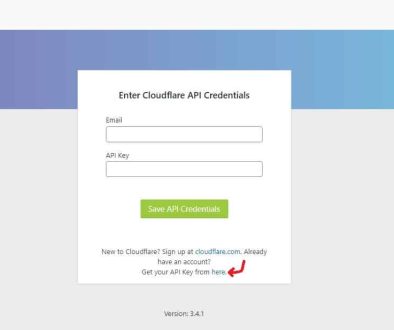The In-Depth Guide to Selling Your Successful eCommerce Business
Considering how much time, effort and money has likely gone into getting your eCommerce business to where it is today, it is likely you haven’t taken much time to step back and consider selling it.
Hopefully, by now, you’re enjoying substantially higher profits and have been able to shift your priorities and spend more time on other projects. This may be the perfect time to consider selling your business.
Selling a business, though, is a huge process. To ensure you get the highest price possible, you need to start looking at your business as if you were an investor, as ultimately they will determine what your business is really worth.
The first step in the process is to figure out how much your eCommerce business is actually worth. This step can also be one of the hardest things you’ll ever do. When it comes down to it, no two eCommerce businesses are exactly the same and there are a number of variables that are in play when it comes business’ value.
You are going to need to understand one critical factor: the reason that a buyer will want to acquire your business is that your business will provide a Return On Investment (ROI) for them.
There’s nothing else to it. They are only concerned about how big of an ROI they’re going to get and how quickly they will get it.
When you look at your business through the eyes of an investor, you can identify any risks or weaknesses that could cause lower offers.
To do that, you will need to ask yourself the following questions.
#1 – What Is Your Yearly Sales Volume?
The biggest factor that will affect your business’ value is its yearly sales volume. Most buyers will be looking at the volume of sales over the last few years, while a select few may use the sales from the last 12 months to determine their offer.
You want to make sure you’re able to show them that the business is stable and the numbers you’re claiming can be easily verified.
If your numbers are hard to verify or inaccurate, investors will believe you’re trying to hide something. This leads them to think you’re hiding other things, and the deal is likely to fall flat as a result.
#2 – What Are Your Profit Margins?
Generating a high volume of sales isn’t enough if you’re trying to justify a high asking price. If buyers see that your margins are incredibly slim, they’re not going to make an offer at the upper end of the spectrum.
You need to be able to show that they will be able to replicate, and hopefully increase, profit margins once you sell. If you are just scraping by or are hitting your targets by stealing from Peter to give to Paul, this isn’t going to look good to investors and will likely end up in either a lower offer or a failed deal.
Before you list your business for sale, spend time trying to increase your profit margins as much as you can. This should be a goal anyway, but know that doing so successfully will be essential to getting a good price for your business.

You can typically increase your profit margins by negotiating better deals with your suppliers, and by eliminating any unnecessary expenses in the business. Once you do, you will need to give some time for those changes to become stable.
Taking these steps to increase profit margins will be tremendously valuable when you go to sell your business, so dedicate a good part of your efforts to making it happen.
#3 – Is Your Store Trending Upwards?
Many entrepreneurs will make a huge mistake when it comes to selling their business. They believe that it’s best to sell when the business has begun to decline. They want to make a quick exit and the next investor will take over and course correct.
Instead, what typically happens is the business will sit on the market far longer than it actually should and would if the entrepreneur took a different approach.
Rather than waiting until your business has begun to decline to list it for sale, you’ll want to list it while it is on an upward trend. If you sell during a decline, you’ll have to justify why the business is declining.
However, if you’re selling on the rise, investors will be willing to pay more for the potential of increased profits shortly after acquiring the business from you.
#4 – How Are New Sales Generated?
If you are currently running a promotion to bring in new sales, document the process behind that promotion. Likewise, if you have tapped into influencer marketing in the past, you’ll want to document the sales those influencers generated for you.
If you are running paid advertising campaigns to drive new sales, you will need to include the metrics from those campaigns so that your buyer can see how the sales are being generated.
The important thing here is to document your progress. You want to be able to show investors how you’ve been able to grow to convince them they can expect more growth in the future.
The sales strategies you are using are going to affect what an investor is willing to pay to acquire the business. If they have to do more work to maintain the sales, they’re going to offer less.
#5 – Is the New Growth Sustainable?
If your eCommerce business has recently experienced a growth spurt, do you have the people and processes in place to handle the increased sales volume?

Do you currently have the inventory necessary, along with the shipping solutions to handle the increased number of customers?
Are you adequately able to support the new customers coming into your business? Can the increase in sales be sustained by itself, or will your buyer need to put in more money and energy to maintain the growth?
Having answers to these questions and solutions to these problems will help make your store more attractive and help you justify a higher asking price during negotiations.
#6 – How Do You Acquire New Customers?
You should be able to map out the different avenues and platforms that you’re currently using to bring in new customers. Make sure each of those strategies can be implemented by your investor once they’ve acquired your business.
Do you have documented processes and systems that can help your buyer maintain a relationship with the customers that you’re bringing into the business?
Investors will want to see sustainable and cost-effective strategies. For example, SEO is usually more valued than paid advertisement because it offers higher ROI and is usually less resource-intensive. Of course, it depends on every business, but the goal is to convince investors there will be no issue bringing in new customers and maintaining profit margins as you do.
But bringing in a consistent stream of new customers is only one part of the equation. How you are able to fulfill those customer’s orders, make sure the customers have great service and support, and then convince them to come back to your store, again and again, are equally important.
Investors will dig into your customer acquisition strategies to make sure they can adequately take over the business and keep it moving on an upward trend.
#7 – How Much Does It Cost to Acquire a Customer?
One of the more popular ways to bring in new customers is through paid advertising channels.
This is a strategy that cuts into your profit margins, though, which is one major area that will affect the business’ value.
If you’re running paid advertising campaigns, you’ll need to provide incredibly detailed and accurate statements about how those campaigns are performing.
The reports will need to show where the traffic is coming from, how much you are spending on that traffic, where the traffic is going to, the conversion rates of the traffic, and ultimately how much it costs to acquire a new customer through those channels.
You’ll be turning all of this information over to your buyer so make sure that it’s able to be easily verified. If the investor cannot easily verify what you’re telling them, the deal could fall through relatively quickly.
#8 – How Are You Positioned Against Your Competition?
The level of competition in your market, and how well you have positioned your own eCommerce business to stand up against it can also play a major role in how much buyers are willing to offer.
You are going to need to look at your market positioning and understand who your competition is, then be able to justify your positioning to investors.
Look into your competition, identify where they are excelling, and where they have fallen short. You will then need to look at your own business and figure out where you are ahead of the pack, and areas that could be improved.
During the negotiation process, you can play on the strengths in your business, while making sure that you’re being honest about any potential weaknesses. You can even go one step further and show ways your weaknesses can be overcome.
Be specific at this point. Present market share figures, and explain why you are where you are. If the price is a major barrier, point out what you think you can do to offer more competitive pricing. If it’s customer service, you better have a plan in place to improve. Showing this kind of forward thinking makes your business much more attractive.
#9 – Is the Business Hands-Free?
Automation in your business is important to have. Investors do not want to buy a new job or have to put in 40 to 60 hours a week on a business they’ve just acquired.
The level of automation you have in your business—or how much work your investor is going to need to put in to sustain your business—will have a big impact on the amount of money they’re willing to offer you to take it over.
This is especially true as you get into the higher valuations, and your business becomes worth more than 7-figures.
If there are aspects of your business that require you to take an active role, you will need to figure out how you can outsource or delegate those activities. On the same note, if you can use an automated service instead of an outsourced employee, it is worth using that service.
Investors want to see that the business is as hands-free as possible.
Selling Your Business
Once you have the answers to each of the questions I’ve presented to you here, you can start figuring out what your eCommerce business is actually worth.
To get in the ballpark range of what the business could be worth, you’ll need to look at what other similar businesses have sold for in the past. Identify their strengths and their weaknesses, and then compare those to your own business model.
In general, an eCommerce store that doesn’t present huge glaring problems will sell for around 2.51 times the yearly net profits.
That means if your business is generating a total of $100,000 in yearly net profits, you can multiply that figure by 2.51 to see a valuation of $251,000. This will be the starting point during negotiations between you and your investor.
To Help You Work Through the Negotiation Process, There Are a Few Things You’ll Want to Do:
● Make sure that you have all of the paperwork and documentation ready to go. Buyers want to see that the numbers you’re presenting are accurate and detailed because they’ll be using the numbers to figure out a final offer.
● You also want to make sure you’ve automated what you can, and created documentation and put systems in place for what you can’t automate. The goal is to make your investor’s life as easy as possible after they acquire the business.
Ensure that the products you’re selling are different. Making sure that your business is not commoditized and easily replaced is a great bargaining chip during negotiations.
● Investigate different avenues for finding buyers and getting the business sold. Some strategies will work better than others, based on the final asking price of the eCommerce business.
● Spend time cleaning up your business. Everything, including how your website looks and how fast it loads, should be in the best working order. If you are able to spot problems, you can safely assume that investors are going to spot those problems too.
You can see from the items I’ve laid out for you that selling a successful eCommerce business isn’t always a clear-cut, black and white deal. There’s quite a bit that goes into figuring out how much the business is worth, and what investors are willing to pay for it.
If you answer the questions that I’ve laid out here, getting the highest value possible from the sale of the eCommerce business can become a reality.
3 Ways to Quickly Sell Your eCommerce Business
Now comes the nitty-gritty—actually selling the eCommerce business. In general, there are 3 different routes you can take when it comes to finding an investor that’s willing to submit an offer.
- Public Marketplaces: Auction houses and marketplaces make it easy for you to start getting offers right away. However, with these platforms, you will need to understand that investors are looking for a deal, making it harder to get offers at the higher end of the spectrum. You can check out Flippa and Shopify.
- Private Deals: Finding an investor on your own is another possibility, especially if you have experience negotiating deals. You can implement a referral program to get your network and customers to refer potential investors to you.
- Business Brokers: Business brokers already have a network of investors in place that is looking for businesses just like yours. They can help you figure out how to get the maximum asking price and work through the negotiation process for you.
The route you take ultimately depends on how much the business is worth, and how much work you want to put into getting it sold.
As long as you follow the guides that I’ve listed for you here, your eCommerce business should be positioned at the upper echelon of the market, and thus receive higher offers.
- The In-Depth Guide to Selling Your Successful eCommerce Business - December 19, 2017
Where Should We Send
Your WordPress Deals & Discounts?
Subscribe to Our Newsletter and Get Your First Deal Delivered Instant to Your Email Inbox.



